-
Posts
473 -
Joined
-
Last visited
Content Type
Profiles
Forums
Blogs
Gallery
Events
Store
Posts posted by Peter Orincsay
-
-
Here?s the centre detail..
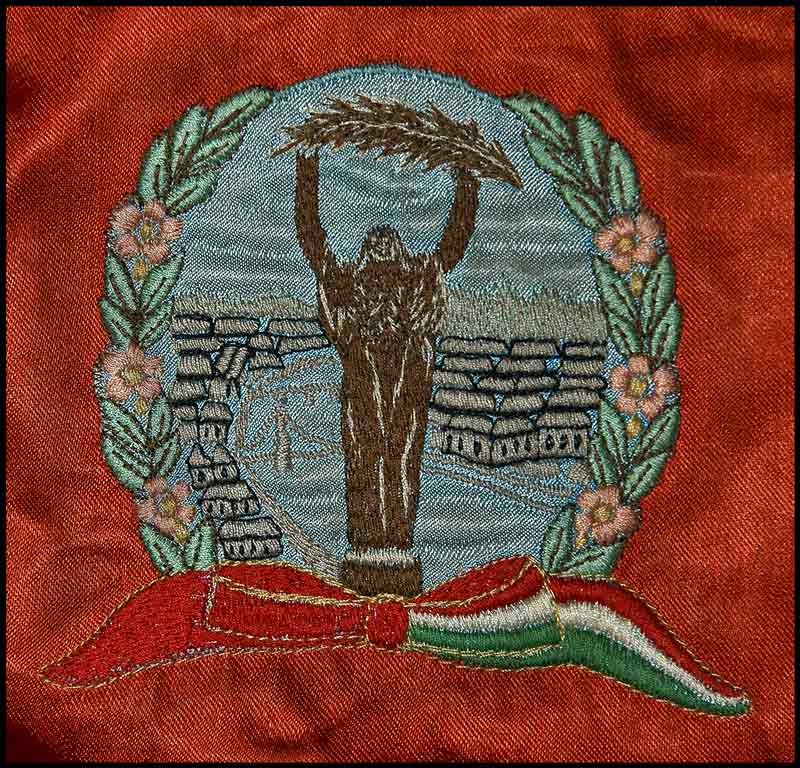 0
0 -
Although I don?t collect Hungarian Peoples Republic items, I thought it would be an interesting thing to share here. I got this small flag some years ago and had it deep in a box until my wife found it yesterday and asked if it was something I needed or wanted to keep... (She wanted to threw it out, but was polite enough to ask first)
It?s a ?Competitions flag? which were passed on to the next work-brigade in the socialist quest to fulfill the plane set by the year plan. The text says; ?The competition-flag to the liberation?, ?For the outstanding work achievement?. I use the word ?Competition? because I?m not really sure what would be the right English word for such work-competition.
The flag is from the ?R?kosi? times before 1956. The statue in front is the liberation statue built on the Gell?rt hill in central Budapest.
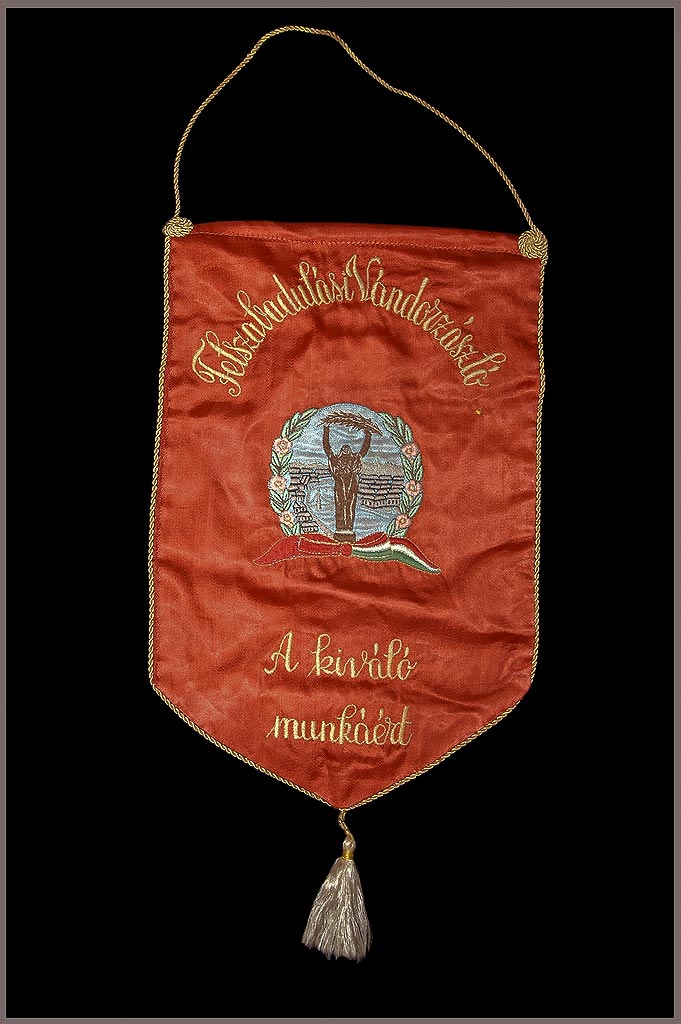 0
0 -
Braşov main squere today..
 0
0 -
A photo i found from Braşov.
Austro-Hungarian artillery on the main squere in 1916.
 0
0 -
Here?s a Hungarian Cross of Merit - Bronze Class, with a red wartime trifold.
I haven?t seen so many this far, besides of my own example.
 0
0 -
A photo from the 1938 S/S Berlin album.
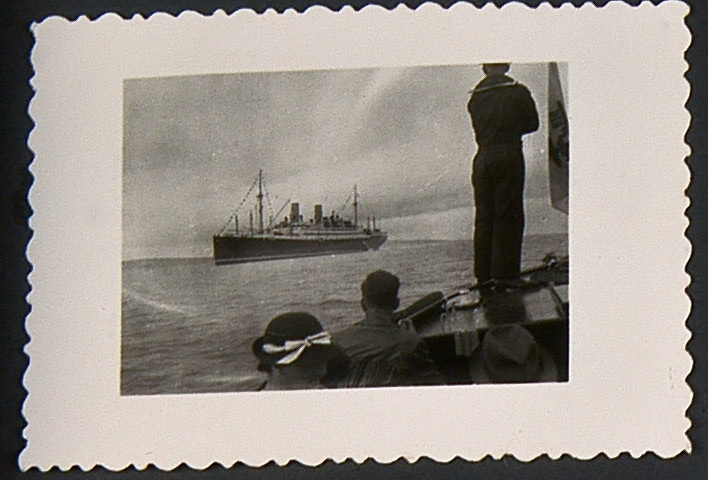 0
0 -
Here?s a photo album fron 1938 of the "S/S Berlin?, built by Bremer Vulcan at Vegesack, Germany (Yard 614) and was completed in March of 1925. She was launched on March 25, 1925, and commissioned on September 17, 1925.
She originally operated the Bremen - Southampton - Cherbourg - New York City run for the Nord Deutsche Lloyd Line. The Berlin was one of eight German ships commissioned as hospital ships (Lazarettschiffe) at some point during World War II. Most, if not all, of these ships also served in other capacities during the war after being decommissioned as hospital ships, mainly as accommodation or transport ships for military personnel. By January 1945, the Berlin began taking part in Operation Hannibal, the transport of refugees and soldiers from the Eastern Baltic. On January 31, 1945, while forming up in convoy to head east, the Berlin struck a mine off Swinem?nde (today Świnoujście in Poland), and was put in tow for Kiel. She then hit another mine and was beached (23.53 hr*, at position 54?02.6 N/14?19 E, in shallow waters). There was one fatality. All usable equipment was salvaged by Feb 5, 1945, and the ship was abandoned.
The Berlin was sunk on February 1, 1945 but was later refloated and salvaged by the Soviets in 1949 and renamed Admiral Nakhimov. After her conversion, her size was increased to 17,053 gross tons. She entered passenger service for the Baltic Steamship Company in 1957.
During the peak summer travel season, the Admiral Nakhimov operated the Black Sea between Odessa and Batumi, a six-day round trip. She carried an average of 1,000 people per voyage. She was the flagship of the Black Sea passenger fleet for several years until more modern liners entered service. At 10:00 p.m. Moscow Time on August 31, 1986, the Admiral Nakhimov sailed from Novorossiysk en route to Sochi, its next stop. Just minutes into the voyage, the ship's pilot noticed that the large a Japanese-built bulk carrier Pyotr Vasev was on a collision course with the Admiral Nakhimov. At 11:12 p.m., the Admiral Nakhimov was struck by the Pyotr Vasev eight miles (15 km) from the port at Novorossiysk and two miles (4 km) from shore line. The Admiral Nakhimov immediately took on a list on her starboard side, and her lights went out upon impact. After a few seconds, the emergency diesel generator powered on, but the lights went out again two minutes later, plunging the sinking ship into darkness. People below decks found themselves lost in the dark and rapidly canting hallways.
There was no time to launch the lifeboats. Hundreds of people dove into the oily water, clinging to lifejackets, barrels and pieces of debris. The Admiral Nakhimov sank in only seven minutes. Rescue ships began arriving just 10 minutes after the ship went down. Passengers and crew had had little time to escape, and 423 of the 1,234 on board perished. Sixty-four of those killed were crew members and 359 were passengers.
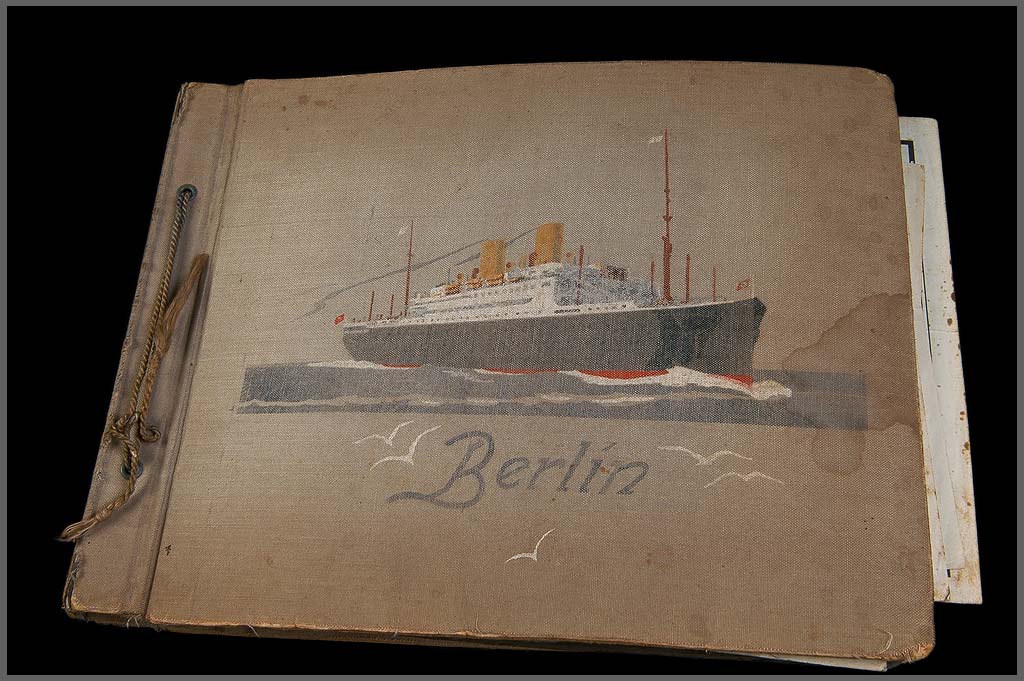 0
0 -
Here?s some closer details of the original box to the Grand Cross of the Hungarian Redcross.
The sixe of the box is 75 x 75 x 20 mm. Some what smaller than the box for the Officers-Cross of the Hungarian Order of Merit.
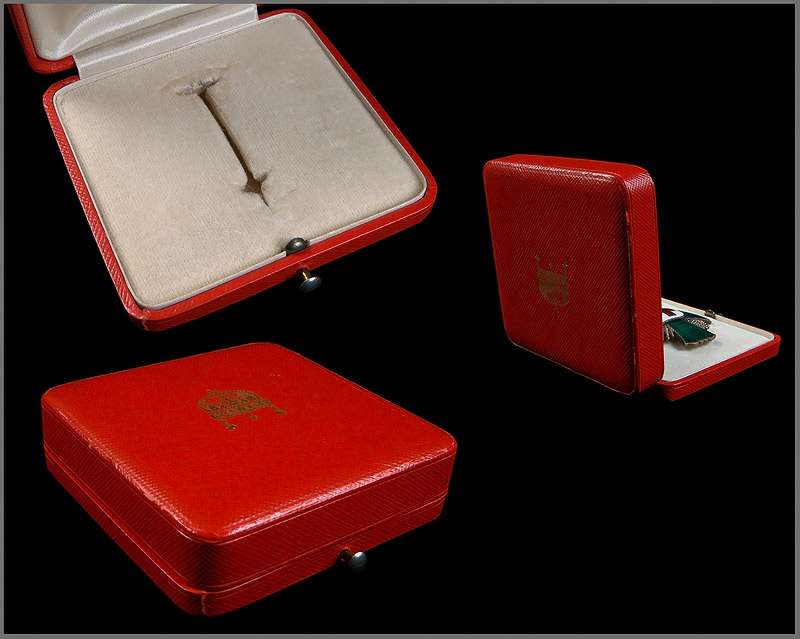 0
0 -
Searching the internet for facts about the RAOB - Royal Antediluvian Order of Buffaloes i found one of their WebPages and decided to write them for more information.
I got the following information from one of the members this morning in the e-mail response.
------------------------
?The Item that is in the Photograph is in actual fact The Working Collar of the Secretary of the Duke of Windsor Lodge No. 9910. This Lodge was opened in 1973, but closed in 1980. This collar would be worn at each meeting.?
-----------------------
So now I know a bit more then all those years I had this piece in my collection!
0 -
Here?s the Grand Cross of the Hungarian Redcross without the box.
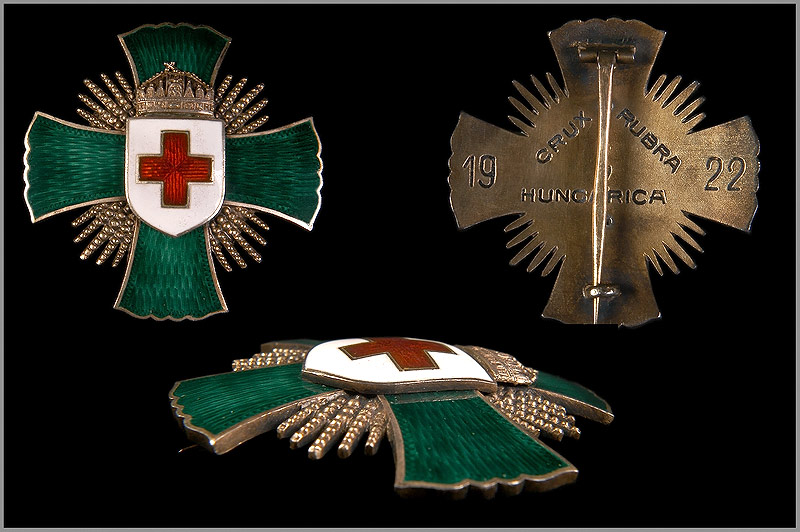 0
0 -
And the Grand Cross of the Hungarian Redcross.
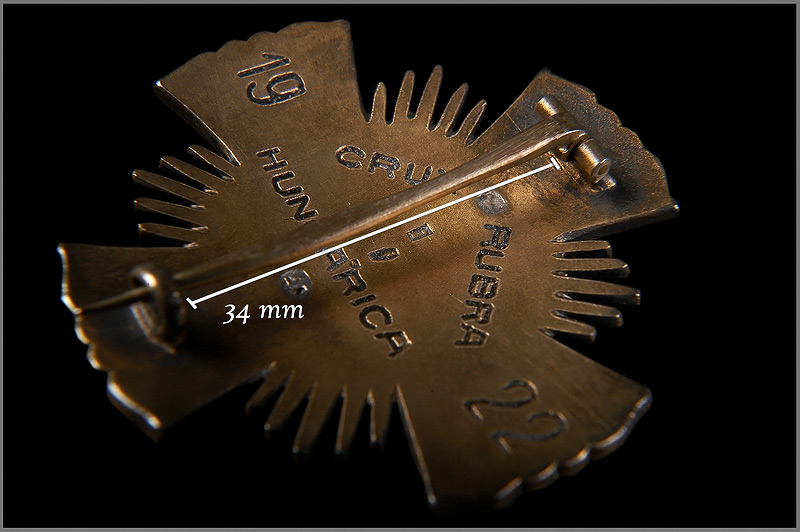 0
0 -
Peter,
Very niced cased awards. I would like to ask you for a favour. Would you please measure the distance of the pin on the back of the awards for me please. The distance I am interested in is from the hook side of the hinge to the top of the hook. I am attempting to replace badges on the existing loops of a Hungarian WWII generals tunic and I have one set of loops to go. I need something like one of these two medals that will fit loops that are 30mm apart.
Regards,
Gordon
Here?s the Hungarian Order of Merit - Officers Cross.
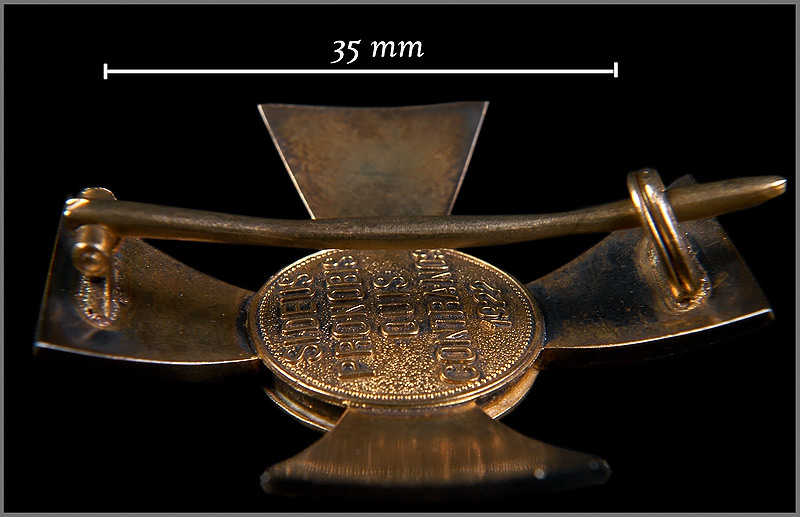 0
0 -
These two beauties arrived with the mail this morning..
 0
0 -
Some of the pages in the notebook..
 0
0 -
Just recently I found out that Hungarian officers had standard sized issued note books to keep their notes..
Here?s my grandfathers... He wrote his detailed notes throughout the whole war. Unfortunately I just have its last part.
The time from January 1945 and until he capitulated to the British Army in Italy...
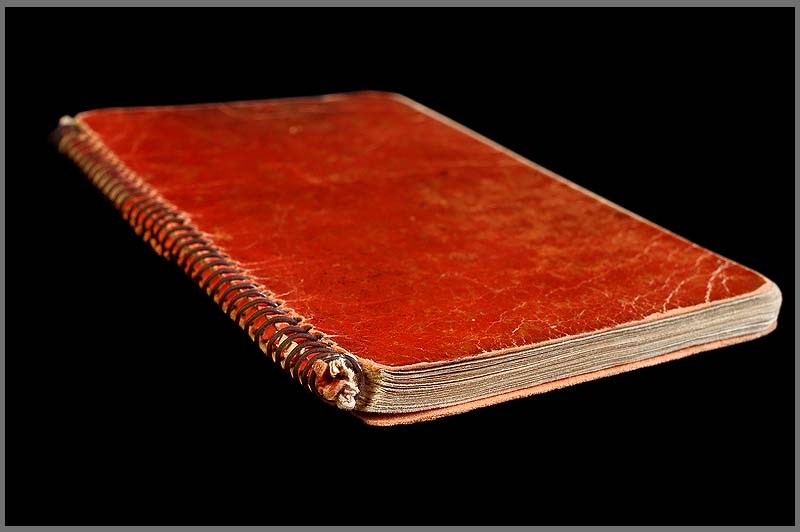 0
0 -
Another item from my collection.
A Hungarian nationalflag from before the war . The stiches and repairs on it shows the meaning it had to it?s previous owner. Im going to put it in a nice frame one day. But first i share it with You fellow Gentlemen!
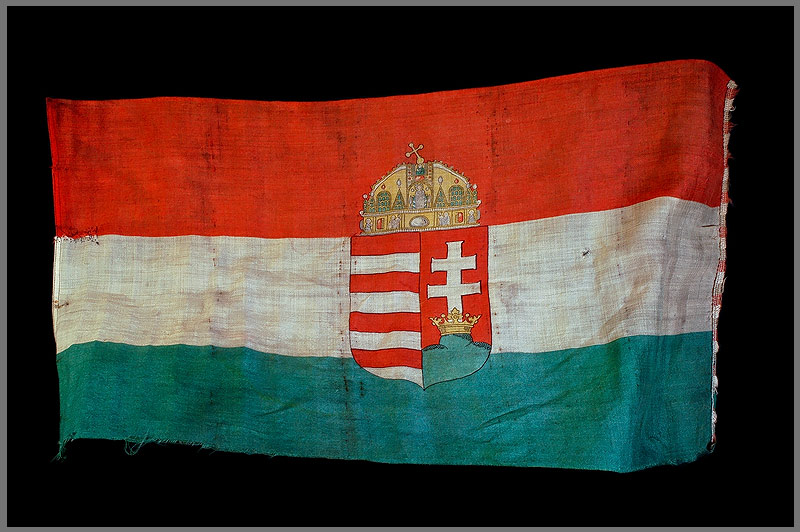 0
0 -
Last one.
 0
0 -
-
My father recalled encountering the officer seen here to the left (Somogyi Lajos), years later while working at ministry of internal affairs changing curtains.
 0
0 -
Only one of the pictured soldiers was killed at this point. The person who?s head is visible second, from the left. The others were wounded but recovered later.
 0
0 -
-
Looking at the drawing of the Osprey Elite series "The Hungarian Revolution 1956?, it looks to me more like the uniform of the AVH. The secret state police worked in different forms and used conscripts as well for some guard duties amongst other. This was the case in 1956 when the fight over the Hungarian communist party headquarters stood. The photographer John Sadovy from LIFE magazine was present at the time and he captured this famous series of pictures.
The uniform is clearly the one pictured on Gordon?s picture of his tunic.
Photographer John Sadovys photos was later used for the death sentence of the 23 year old Galg?czi Zolt?n.
More of that can be read at http://www.eorsilaszlo.hu/el/galgoczi.html (Hungarian)
 0
0 -
Hello Brian!
I really look forward to see your amazing work here!
Everytime i see dedication of this kind, i know it brings inspiration and interest to a lot of people who are interested in history and personal stories. I know it does so for me!
Keep up the good work!
Cheers!
P?ter N.
G?teborg, Sweden
0 -
I dont have any military papers from my grandfather left. All these things were hidden during the socialist times and all old "Ludovika academy" officers had to keep a very low profile about their past. The real big treasure among my grandfathters things was his photo-negatives that were hidden on the attic at his mothers house for decades. Since he was blind for the last 15 years of his life, he coudn?t do much with them. But fortunately the ended up with me and my digital negative scanner years later.
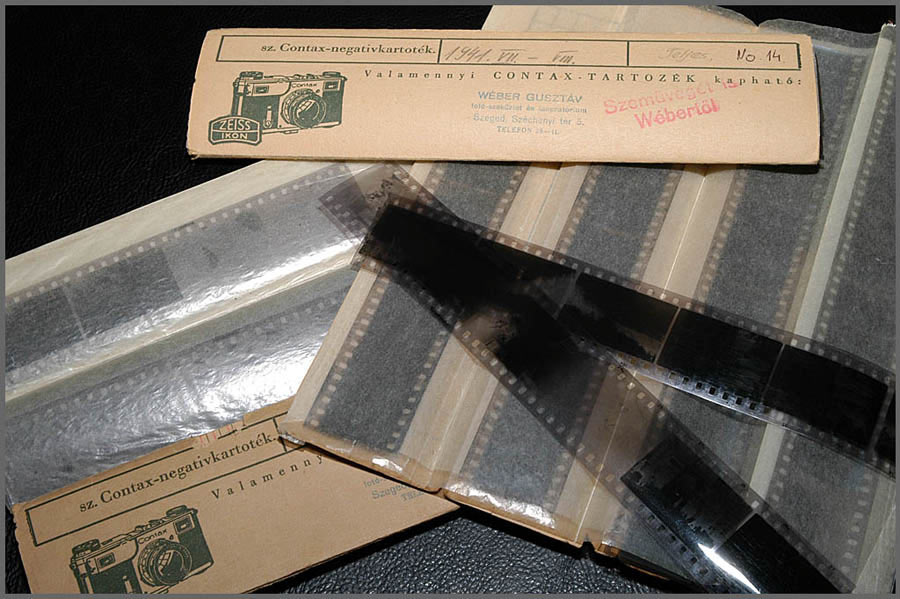 0
0





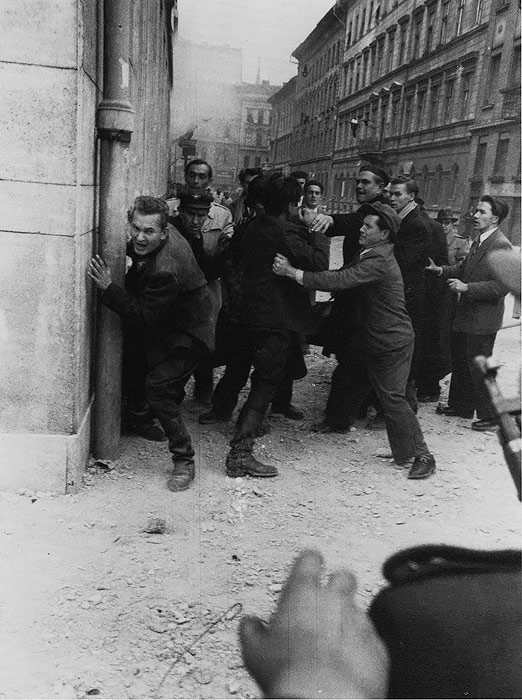
Peter Nyitrays collections of Hungarian and Austro-Hungarian militaria.
in Austro-Hungarian Empire
Posted
Here?s a small ?Buttonhole? badge of the Orsz?gos Frontharcos Sz?vets?g, (The National Front-Line Fighters? Association). This is the original white badge. The badge was later made in green with golden details instead of the silver ones seen here.
The the Orsz?gos Frontharcos Sz?vets?g was founded the 24th, December 1931. Their mission was to help their disabled comrades, the widows and orphans; and to educate Europeans about the catastrophic war. Unlike many such organizations, the members acted as ambassadors of peace; closely working with veterans? groups from England and France - their former enemies. Female nursing personnel and veterans from all religions were welcome in this association, and all members, from generals to the lowest ranks, were considered equals. In September of 1939 the name was given a slightly more Hungarian flavour; Magyar T?zharcos Sz?vets?g, and continued serving the interests of the veterans and their families until the end of W.W.II.
The organization lives on today through their descendants at http://www.mhbk.com/ .